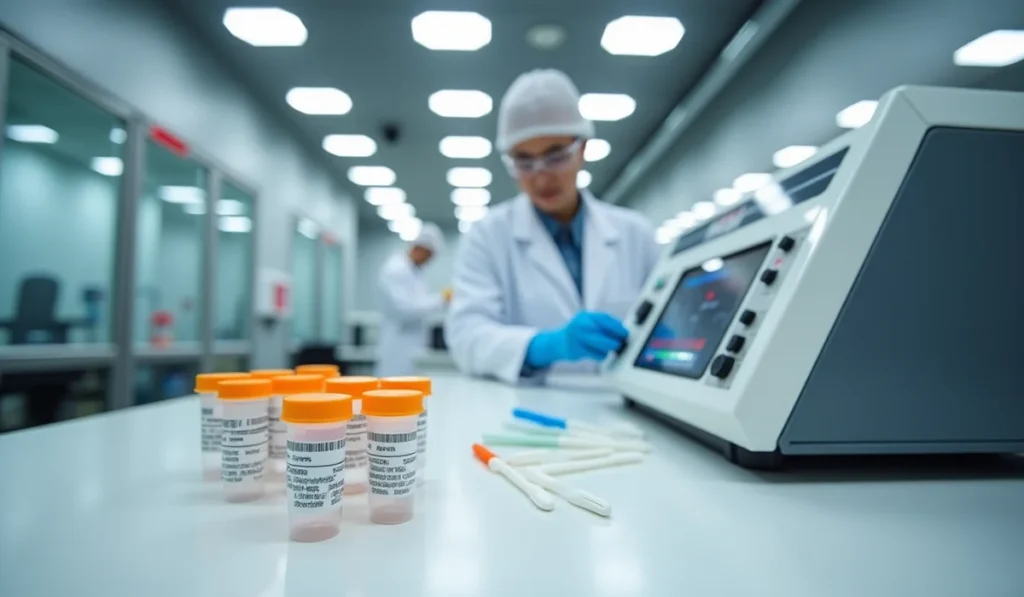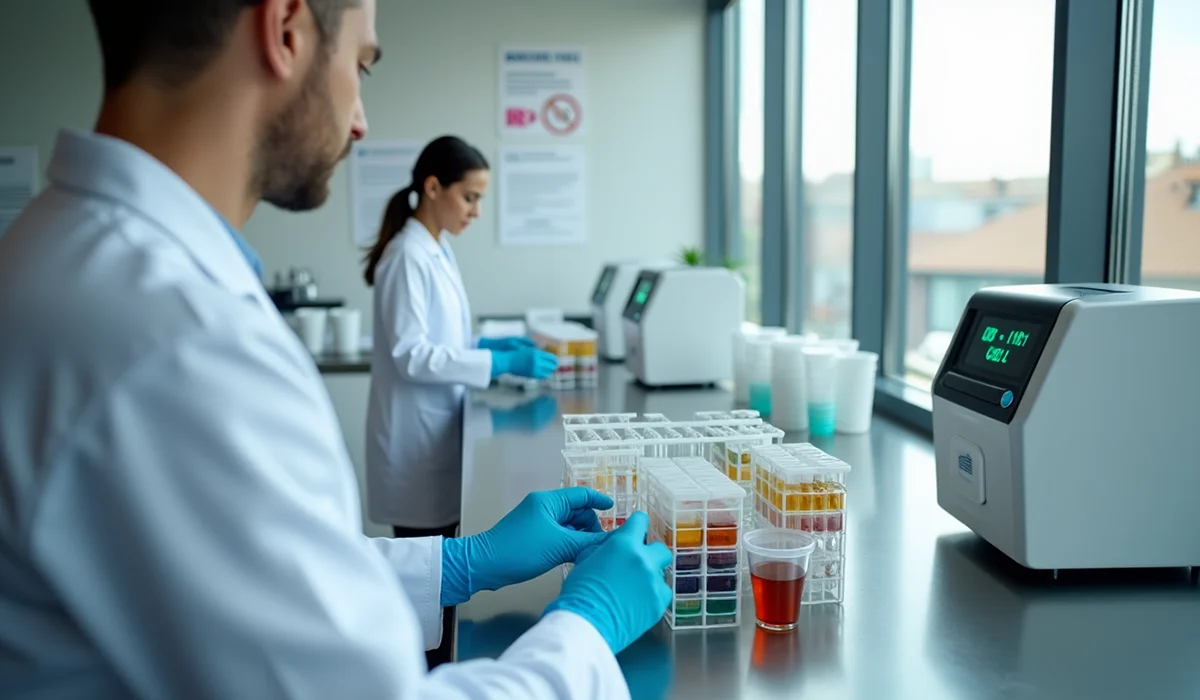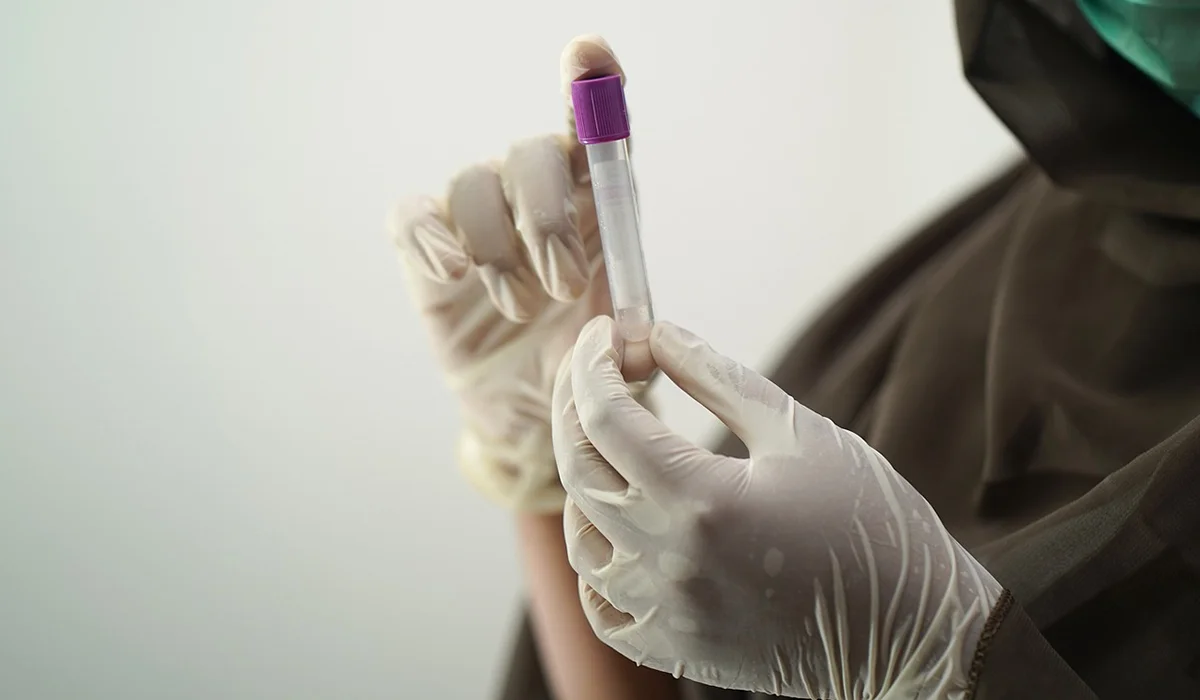Federal workers face new drug test requirements due to an escalating crisis. Fentanyl, known for its high potency, has become the third most identified drug in forensic laboratories and represents 13.81% of all reported drugs in 2022. These findings have led to much change in federal drug testing guidelines, with the Department of Health and Human Services (HHS) leading the charge in collaboration with the Drug Enforcement Administration. The new policy also addresses concerns related to cannabis products, including high THC weed and various cannabis concentrates.
The HHS reviewed 176 public comments from 118 contributors before announcing fentanyl’s inclusion in federal drug testing panels. The new policy will take effect by July 7, 2024, and will cover both urine and oral fluid testing. Federal workplace specimens might show positive fentanyl results in just 0.1% to 0.3% of cases. This addition is a vital part of ongoing work to boost workplace safety, tackle the broader opioid crisis, and monitor cannabis potency alongside other substances. The policy also considers the impact of marijuana legalization in various states and the need to accurately measure THC levels in cannabis flower and other products.
HHS Implements New Federal Drug Testing Guidelines
Federal workplace drug testing protocols will undergo complete changes finalized by the Department of Health and Human Services. Revised drug testing panels for both urine and oral fluid specimens will take effect July 7, 2025 [1]. New nomenclature requirements for laboratory and Medical Review Officer Reports have also been put in place, reflecting advancements in cannabis research and testing methodologies, including the ability to detect high THC percentages in cannabis products.
Extensive research and public consultation led to the addition of fentanyl testing. The department studied fentanyl prevalence in regulated drug testing specimens and reviewed laboratory capabilities to detect both fentanyl and its metabolite, norfentanyl [2]. Non-regulated workplace testing data suggests that 0.27-0.37% of federal workplace urine specimens will likely screen positive during original testing [2]. The new guidelines also address the need to accurately measure THC levels in various cannabis products, including edibles and cannabis concentrates.
These new guidelines require laboratories to:
- Conduct initial fentanyl tests at 1 ng/mL cutoff level
- Ensure fentanyl immunoassay tests show at least 5% cross-reactivity for norfentanyl
- Perform confirmatory testing at 1 ng/mL for both fentanyl and norfentanyl [2]
- Implement testing procedures to accurately measure THC percentages in cannabis flower and other products
The department managed to keep existing requirements for other substances intact. Methylenedioxyamphetamine (MDA) and methylenedioxymethamphetamine (MDMA) will stay in the urine and oral fluid drug testing panels after careful review [1]. Current scientific literature and testing technologies available in HHS-certified laboratories support these changes [2], including the ability to detect and measure terpenes and other compounds found in the cannabis plant.
Specific provisions exist for oral fluid testing implementation. Qualified collectors must meet strict requirements and complete oral fluid collector training or ‘train the trainer’ courses successfully [3]. Clear guidelines now specify who can be present during specimen collection, limiting attendance to the collector, employee, and DOT agency representatives [3].
How Will Federal Agencies Conduct Fentanyl and THC Tests?
Federal agencies use a complete laboratory-based approach to implement fentanyl testing and measure THC levels. The Department of Health and Human Services must certify laboratories under the National Laboratory Certification Program before they can conduct any tests [4]. This certification process ensures that labs are equipped to handle various cannabis samples and other substances accurately, including the ability to determine THC percentages in high THC weed.
Agencies can pick between two testing methods. Oral fluid testing provides better protection against specimen tampering because staff can observe the collection directly [5]. Drug detection happens within one hour of use and can be detected up to 48 hours later [6], allowing for efficient cannabis potency monitoring and detection of other substances.
The laboratory analysis works in two steps. Scientists use enzyme immunoassay (EIA) for screening and liquid chromatography-tandem mass spectrometry (LC-MS/MS) to confirm results [7]. This two-step approach will give a precise detection of fentanyl and its analogs, including acetylfentanyl and furanylfentanyl [7], as well as accurately measure THC concentration in cannabis-related tests. Laboratories may also use a cannabinoid potency chart to interpret results and determine the strength of cannabis products.
Laboratories must meet these specific testing requirements:
- Maintain original test cutoffs of 4 ng/mL for oral fluid and 1 ng/mL for urine specimens [2]
- Fentanyl immunoassay tests must show 5% cross-reactivity for norfentanyl [2]
- Conduct confirmatory testing at 1 ng/mL cutoff levels [2]
- Implement procedures to accurately measure THC levels in various cannabis products, including high-grade medical marijuana
Mass spectrometry methods excel at specificity and sensitivity for fentanyl detection [8]. Notwithstanding that, these tests need more technical expertise and time than immunoassays [8]. Federal agencies want to uphold the highest standards of accuracy and reliability in workplace drug testing programs through this detailed testing framework, which also accounts for the detection of various cannabinoids and the measurement of THC percentages in cannabis flower and other products.
Federal Workers Navigate Privacy Concerns
Federal drug testing programs follow strict privacy protections under the law. The law prohibits visual monitoring during urine specimen collection unless someone suspects tampering with specimens [9]. These privacy protections extend to testing for high THC weed and other cannabis products.
Medical Review Officers (MROs) act as independent gatekeepers between testing facilities and federal agencies. These professionals can’t have financial connections to testing labs or get any benefits from specific testing facilities [10]. They review all positive results and keep drug test information completely confidential [10], including any data related to the psychoactive effects of detected substances, such as high THC percentages in cannabis products.
The Drug-Free Workplace Act protects privacy in several ways:
- Specimen collection must follow HHS Mandatory Guidelines
- Split specimen collection offers additional verification options
- Only certified laboratories can conduct testing
- Test results with valid medical explanations remain confidential [11]
The Americans with Disabilities Act (ADA) provides extra privacy protection. Employers can’t discriminate against recovering substance users who have gotten treatment [12]. State courts have ruled it discriminatory when employers ask about legal prescription drug use during pre-hiring [12]. These protections also apply to individuals using high-grade medical marijuana in states where it is legal.
The National Labor Relations Act requires drug testing programs to go through formal collective bargaining for unionized federal workers [12]. This way, employees have a say in testing procedures and retain control over privacy rights, including concerns about potential memory impairment related to substance use or the consumption of high THC weed.
Conclusion
The addition of fentanyl testing and enhanced THC level monitoring represents a most important move in federal workplace drug screening protocols. A complete approach balances workplace safety with employee privacy rights through strict laboratory standards and Medical Review Officer oversight. The new guidelines show the federal government’s dedication to tackle the opioid crisis while protecting worker confidentiality and addressing concerns about substance potency, including the rising THC percentages in cannabis products.
These changes definitely reflect careful analysis of scientific evidence, public input, and laboratory capabilities. The dual testing methodology combines immunoassay screening with mass spectrometry confirmation and will give reliable results for both fentanyl and cannabis products. Federal agencies now have better tools to maintain drug-free workplaces that respect employee rights through proven privacy safeguards and union protections, while also addressing the complexities introduced by marijuana legalization in various states.
There’s another reason why these new testing protocols make federal workplaces safer. The scientific rigor and employee protections back this balanced approach. Workplace safety measures can adapt to new challenges and still protect essential privacy rights, while also keeping pace with evolving trends in substance use and cannabis potency monitoring. This includes the ability to accurately measure THC levels in various cannabis products, from dried cannabis flower to edibles and concentrates.
References
[1] – https://public-inspection.federalregister.gov/2025-00425.pdf
[3] – https://www.transportation.gov/ODAPC/Notice_Summary_Nov_2024
[4] – https://www.samhsa.gov/substance-use/drug-free-workplace/drug-testing-resources/lab-list
[5] – https://pmc.ncbi.nlm.nih.gov/articles/PMC5711761/
[6] – https://www.labcorp.com/organizations/employers/workplace-drug-testing/oral-fluid-drug-testing
[7] – https://www.redwoodtoxicology.com/services/oral_fluid_fentanyl_testing
[8] – https://www.sciencedirect.com/science/article/abs/pii/S0065242323000495
[9] – https://www.ncbi.nlm.nih.gov/books/NBK236253/
[10] – https://www.samhsa.gov/sites/default/files/workplace/MRO_Manual_2010_100908.pdf
[11] – https://www.samhsa.gov/substance-use/drug-free-workplace/faqs
[12] – https://www.samhsa.gov/substance-use/drug-free-workplace/employer-resources/federal-laws





